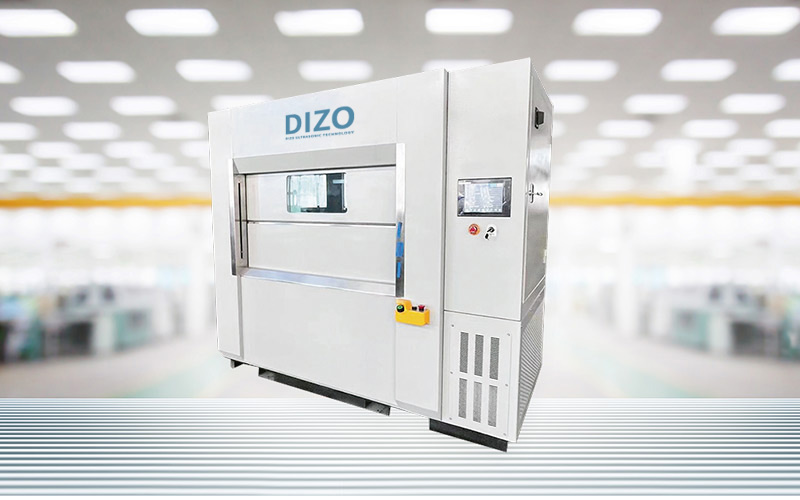Vibration vs Ultrasonic Welding: Which One is Right for You?
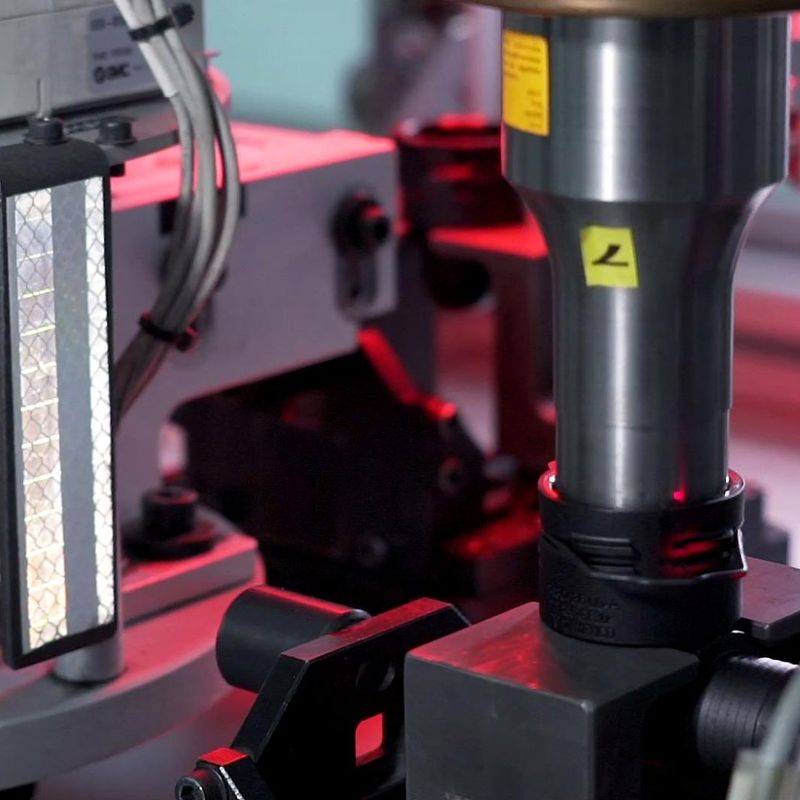
In the world of plastic welding, two methods dominate when it comes to joining thermoplastics: Vibration Welding and Ultrasonic Welding. Each technique offers unique advantages and is suited for specific applications.
Knowing the differences between vibration welding and ultrasonic welding is essential for selecting the best approach for your plastic welding needs.
In this article, we will compare vibration welding vs ultrasonic welding, help you identify their pros and cons, and ultimately guide you to make the right decision for your manufacturing needs.

Table of Contents
Vibration Welding vs. Ultrasonic Welding: Which is Better?
Understanding Vibration Welding
Understanding Ultrasonic Welding
Key Differences Between Vibration and Ultrasonic Welding
Advantages of Vibration Welding
Advantages of Ultrasonic Welding
Choosing the Right Welding Method for Your Application
FAQs
Final Thoughts
Vibration Welding vs. Ultrasonic Welding: Which is Better?
To make it easier to understand the key differences between vibration welding and ultrasonic welding, let's break them down in a comparison table:
Vibration vs. Ultrasonic Welding Comparison Table
Feature |
Vibration Welding |
Ultrasonic Welding |
|---|---|---|
Welding Principle |
Uses mechanical vibrations to generate heat at the interface between two parts. |
Uses high-frequency sound waves to create heat and bond the materials. |
Vibration Mode |
Linear vibration in a back-and-forth motion. |
Oscillating vibration at ultrasonic frequencies (typically 20–40 kHz). |
Vibration Frequency |
Low-frequency vibrations (around 60–150 Hz). |
High-frequency vibrations (20–40 kHz). |
Welding Time |
Relatively longer welding times, typically a few seconds to a minute. |
Fast welding times, usually a fraction of a second to a few seconds. |
Welding Object |
Ideal for large and robust parts that require high pressure and heat. |
Best for small, intricate parts requiring precision. |
Material Compatibility |
Works best with thermoplastics like nylon, PVC, polypropylene, and ABS. |
Works best with thermoplastics, including PVC, polypropylene, and polyamide, but also metals like aluminum. |
Joint Strength |
Stronger bonds are created, especially for large and thicker parts. |
Strong bonds with minimal distortion for small and precise parts. |
Cost |
Moderately priced equipment, more affordable than laser welding but higher than ultrasonic for large setups. |
Relatively lower cost for small setups, but costlier for larger industrial applications. |
Long-term Economic Benefits |
Excellent for high-volume production with moderate part sizes, providing cost efficiency over time. |
Ideal for small batch production with minimal part sizes; may offer quicker returns in smaller setups. |
Understanding Vibration Welding
Definition and Process
Vibration welding is an efficient method for joining thermoplastic parts using high-frequency mechanical vibrations generated by a vibration welding machine.
These vibrations create heat through friction at the interface of the plastic parts. Once the materials reach their melting point, they fuse under pressure and form a strong bond as they cool and solidify.
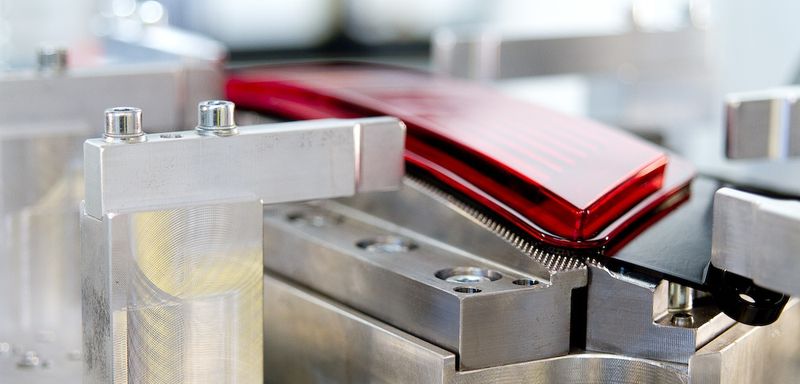
The basic process of vibration welding typically includes the following stages:
- Heating Stage: The vibration mechanism causes the surfaces of the plastic parts to rub against each other, generating frictional heat.
- Melting Stage: The frictional heat raises the temperature at the joint area, softening the plastic parts until they begin to melt.
- Pressing Stage: The two parts are pressed together under force, allowing the molten plastic to fuse.
- Cooling Stage: After the vibration stops, the parts are kept under pressure to solidify the bond, resulting in a strong, cohesive joint.
The key factor in vibration welding is the vibration mode, which typically involves linear vibrations that move the parts back and forth along a specific direction. The heat generated from this friction allows for the materials to soften and bond effectively.
Applications
Vibration welding is used in industries where large, durable, and strong joints are required. Some common applications include:
- Automotive Industry: Used for welding large parts like bumpers, instrument panels, and headlamp housings, which need to withstand heavy impacts and stress.
- Electronics: Employed for welding battery housings, enclosures, and other large plastic components in electronic devices that require a strong, lasting bond.
- Medical Devices: Vibration welding is important in manufacturing items like syringes, catheters, and disposable medical components, where sterility and strong seals are required.
- Industrial Equipment: It is also widely used to join parts like hoses, valves, and pumps in industrial machinery and equipment.
This welding method is particularly beneficial in high-volume production environments where speed and strength are essential.
Understanding Ultrasonic Welding
Definition and Process
Ultrasonic welding uses high-frequency sound waves to generate heat through vibration. The sound waves are applied via a sonotrode, amplifying the ultrasonic energy.
This causes the material to vibrate at a high frequency, generating friction and localized heat at the contact point. As the material melts and pressure is applied, the parts fuse.
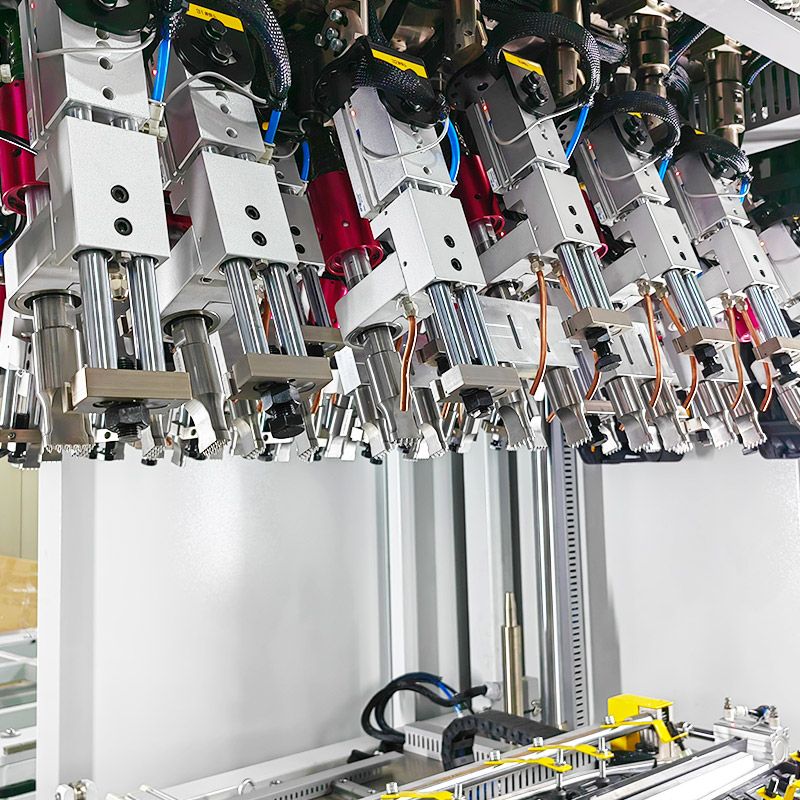
The process includes the following steps:
- Application of Ultrasonic Energy: Ultrasonic waves are applied to the plastic materials through a sonotrode or horn that directs the sound energy to the joint interface.
- Friction and Heat Generation: The sound energy causes the materials to vibrate, generating heat at the contact points, and melting the plastic.
- Fusing Stage: Once the plastic melts, the pressure is applied, and the parts are fused.
- Cooling Stage: The ultrasonic energy is turned off, and the joint is allowed to cool and solidify under pressure, resulting in a strong bond.
Ultrasonic welding uses high-frequency vibrations typically between 20 kHz to 40 kHz, making it ideal for small parts where precision and speed are critical.
Applications
Ultrasonic welding is ideal for small and delicate parts that require high precision and fast processing. Some common applications include:
- Electronics: Used in manufacturing components like smartphone housings, electrical connectors, and circuit board components. The precision and minimal thermal exposure make it suitable for intricate electronic parts.
- Medical Devices: Ideal for joining small medical components such as surgical instruments, drug delivery devices, and syringes.
- Packaging: Ultrasonic welding is commonly used in the packaging industry for sealing blister packs, plastic containers, and other lightweight plastic packages.
- Automotive: In the automotive industry, ultrasonic welding is used to join small components like electrical connectors, airbag modules, and lightweight trims that require quick and precise welding.
Ultrasonic welding is beneficial when high-speed production and precision are needed, especially for smaller components where minimal heat exposure is required.
Key Differences Between Vibration and Ultrasonic Welding
Understanding the key differences between vibration welding and ultrasonic welding is crucial when choosing the right method for your application.
Below is a detailed comparison of vibration welding vs ultrasonic welding based on several important factors.
Welding Principle
- Vibration Welding: This method uses mechanical vibrations to generate heat through friction between the plastic parts to be joined.
- Ultrasonic Welding: Ultrasonic welding uses high-frequency sound waves (ultrasonic energy) to create vibrations in the material at the joint. These vibrations generate heat due to friction, which melts the plastic at the interface.
Difference: The main distinction lies in the energy used. Vibration welding relies on mechanical vibrations generated by an oscillating surface, while ultrasonic welding uses ultrasonic sound waves for heat generation.
Vibration Mode
- Vibration Welding: The vibration mode in vibration welding is typically linear or translational, where the parts move back and forth along a specific axis.
- Ultrasonic Welding: In ultrasonic welding, the vibration mode is typically oscillatory, with vibrations being applied perpendicular to the surface of the joint.
Difference: Vibration welding uses linear oscillation, while ultrasonic welding uses perpendicular, high-frequency oscillations.
Vibration Frequency
- Vibration Welding: The vibration frequency in vibration welding is typically low to moderate (usually between 100 Hz and 200 Hz).
- Ultrasonic Welding: Ultrasonic welding operates at high frequencies, usually between 20 kHz and 40 kHz.
Difference: Vibration welding operates at low frequencies, while ultrasonic welding uses high frequencies to achieve rapid results.
Welding Time
- Vibration Welding: The welding time for vibration welding is typically longer, usually lasting between 1 to 3 seconds for most applications.
- Ultrasonic Welding: Ultrasonic welding is a much faster process, often completed within milliseconds to a few seconds, depending on the size and complexity of the parts being welded.
Difference: Ultrasonic welding is much faster than vibration welding, which requires longer cycle times.
Welding Object
- Vibration Welding: Vibration welding is typically used for larger plastic parts that require strong, durable bonds. These parts may include components like automotive bumpers, instrument panels, and large housings.
- Ultrasonic Welding: Ultrasonic welding is best suited for smaller, more delicate parts. It is used to weld components like electronic enclosures, medical devices, and small connectors.
Difference: Vibration welding is better for larger components, while ultrasonic welding is ideal for smaller, precise parts.
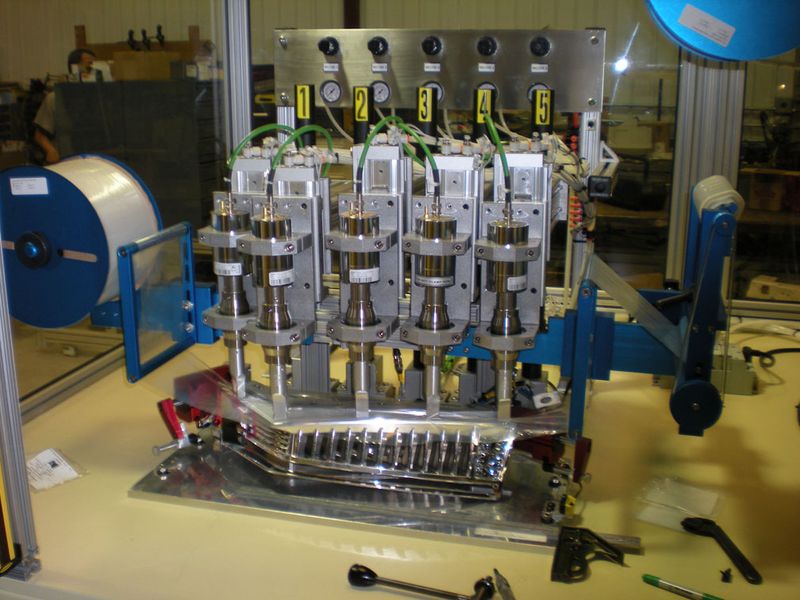
Material Compatibility
- Vibration Welding: Vibration welding is versatile in terms of the materials it can weld. It works well with thermoplastic materials such as ABS, polyethylene, polypropylene, and nylon.
- Ultrasonic Welding: Ultrasonic welding is also effective for thermoplastics, but it is particularly advantageous for materials like polycarbonate, nylon, PVC, and polypropylene.
Difference: Both methods are suitable for thermoplastics, but ultrasonic welding is more specific in the types of materials it can handle, particularly with respect to precision and small parts.
Joint Strength
- Vibration Welding: The bond created by vibration welding is strong and durable, making it an excellent choice for applications where the joint will undergo significant stress, such as in the automotive and heavy-duty equipment industries.
- Ultrasonic Welding: The bond formed in ultrasonic welding is typically strong but less robust than vibration welding, making it suitable for applications that require precision but don't involve heavy stress. The strength of the joint can be compromised if the welding conditions are not optimized.
Difference: Vibration welding typically results in stronger, more robust joints, while ultrasonic welding offers good strength for smaller, less demanding applications.
Cost
- Vibration Welding: Vibration welding equipment is generally more expensive to set up due to its larger-scale operation and the need for specialized tooling. However, the long-term operational costs can be lower due to its efficiency in producing durable joints.
- Ultrasonic Welding: Ultrasonic welding is often less expensive to set up compared to vibration welding. The ultrasonic welding equipment is smaller, and the process requires less energy, making it a good choice for small-scale production. However, in large-scale applications, the per-part cost can increase.
Difference: Ultrasonic welding equipment tends to be cheaper to set up, but vibration welding can be more cost-effective in large-scale applications.
Long-term Economic Benefits
- Vibration Welding: The long-term economic benefits of vibration welding include lower per-part costs in high-volume production, durability, and strength. This makes it ideal for industries such as automotive and heavy-duty manufacturing, where large parts need to be produced at scale.
- Ultrasonic Welding: Ultrasonic welding offers fast cycle times and is excellent for high-precision manufacturing of small parts. The long-term benefits come in the form of reduced labor costs, minimal energy consumption, and high-speed production, especially for industries like electronics and medical devices.
Difference: Vibration welding provides greater economic benefits in high-volume applications with large parts, while ultrasonic welding is more suited for precision and small-part manufacturing in terms of both speed and cost.
Advantages of Vibration Welding
Vibration welding offers several benefits that make it a popular choice for many industrial applications. Below are some key advantages:
Strong, Durable Bonds
Vibration welding creates strong and reliable welds, making it ideal for high-performance applications where the welded parts will undergo significant stress or exposure to harsh conditions.
Suitable for Large Parts
Vibration welding is particularly effective for larger parts that have flat surfaces. It can handle components that are too large for other types of welding, such as ultrasonic welding.
No Additional Materials Needed
Unlike some other welding techniques, vibration welding does not require additional materials like adhesives or solvents. This can lead to cost savings and better environmental sustainability.
Minimal Deformation
Vibration welding generates heat through friction, which means less overall heat is applied to the material compared to methods like heat staking or traditional fusion welding. This helps prevent excessive deformation of the welded parts.
Energy Efficiency
The energy consumption in vibration welding is typically lower than that in some other welding methods, such as ultrasonic welding, making it a more energy-efficient option in some cases.
Versatile Applications
Vibration welding is versatile and can be used to join a wide range of thermoplastics. It is commonly used in industries like automotive manufacturing, medical device production, and the consumer electronics sector.
Advantages of Ultrasonic Welding
Ultrasonic welding offers several significant benefits that make it a go-to solution for manufacturers looking for fast, efficient, and high-quality welds. Below are some of the key advantages of ultrasonic welding:
Fast and Efficient Process
One of the most prominent advantages of ultrasonic welding is its speed. The process is completed in mere seconds, allowing for rapid assembly of plastic components. This makes ultrasonic welding highly suited for high-volume production environments where minimizing cycle time is crucial.
Precise and Controlled Welding
Ultrasonic welding is highly precise, with the ability to generate heat in a localized area without affecting the surrounding material. This precision is especially beneficial when welding delicate or small parts, ensuring tight tolerances and accurate bonding.
No Need for Additional Materials
Like vibration welding, ultrasonic welding doesn't require any adhesives, solvents, or fillers to create the bond. This feature not only reduces material costs but also eliminates the risk of contaminants, leading to cleaner, stronger, and more reliable joints.
Clean and Environmentally Friendly
Ultrasonic welding is a clean process. There is no need for external heating, flames, or fumes, making it a safer and more environmentally friendly alternative to traditional welding techniques. This contributes to a cleaner workplace and a more sustainable manufacturing process.
Minimal Heat Generation
Since ultrasonic welding generates heat only at the point of contact between the materials, there is minimal heat input into the surrounding areas of the workpiece. This helps to avoid warping, deformation, or material degradation, ensuring high-quality welds.
Energy Efficiency
Ultrasonic welding is energy-efficient because it operates with minimal power compared to other welding processes. The process uses high-frequency sound waves, which means less energy is required to create the heat needed for bonding, ultimately lowering operational costs.
Ability to Weld a Variety of Materials
Ultrasonic welding is versatile and can be used with a wide range of thermoplastics, including polyethylene, polypropylene, polystyrene, and PVC. Additionally, it can be used to join dissimilar materials, which may not be possible with other types of welding techniques.
Strong and Durable Joints
Ultrasonic welding forms strong, durable joints that can withstand stress and harsh conditions. The bonds formed are reliable, making ultrasonic welding a preferred choice in industries like electronics and automotive, where product integrity is critical.
No Need for Post-Weld Finishing
The ultrasonic welding process typically leaves little to no residual material that needs to be cleaned up, which can reduce the need for post-welding finishing. This feature speeds up the production process and lowers additional labor and material costs.
Choosing the Right Welding Method for Your Application
Choosing the correct welding method for your application depends on several factors, including the size and type of materials, production volume, and desired weld strength. Below are some considerations to keep in mind:
For Large, Flat Parts
If you're dealing with larger parts that need to be welded with minimal deformation, vibration welding may be the ideal choice. The process works efficiently for flat surfaces and large components, which ultrasonic welding might struggle with.
For Smaller, More Complex Parts
If you need precision welding for smaller or intricate parts, ultrasonic welding might be the better option. It offers fine control and is ideal for components with tight tolerances or small features.
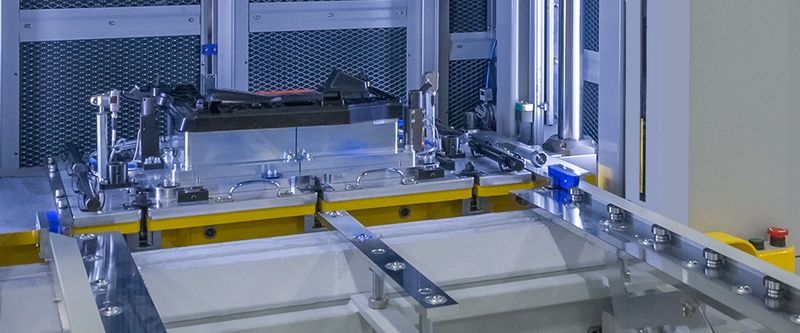
For High-Volume Production
Ultrasonic welding is often favored for high-volume applications due to its speed and efficiency. Vibration welding, while effective for larger parts, tends to be slower in comparison and may not be as suitable for mass production.
For Strong Welds
If the bond strength is crucial, such as in automotive or heavy-duty applications, vibration welding is typically more effective. The strong, durable bonds created by vibration welding are ideal for parts that will undergo significant mechanical stress.
For Cost and Energy Efficiency
Consider ultrasonic welding if you're looking for a process that requires less energy and can be automated for faster turnaround times. While vibration welding can be energy-efficient, ultrasonic welding tends to offer quicker cycle times.
FAQs
1. What is the main problem in ultrasonic welding?
One of the main issues with ultrasonic welding is its limitation in handling larger parts. It is best suited for small to medium-sized components. Additionally, ultrasonic welding requires precise control of the vibrations, as improper settings can lead to weak welds or part damage.
2. What is the frequency of vibration welding?
Vibration welding typically operates at frequencies ranging from 100 Hz to 300 Hz, much lower than the higher frequencies used in ultrasonic welding. This range ensures sufficient friction and heat generation to create a reliable weld.
3. What is one advantage of ultrasonic welding over other types of welding?
One significant advantage of ultrasonic welding over other methods is its speed. It can produce welds in a fraction of the time compared to traditional welding techniques, making it an excellent choice for high-volume production with small or medium-sized parts.
Final Thoughts
Both vibration and ultrasonic welding are effective for joining plastic parts, each with distinct benefits. Vibration welding is ideal for large parts requiring strong, durable bonds, while ultrasonic welding is faster and more precise, suited for high-volume, small-part applications.
Choosing the right welding method depends on various factors such as part size, production speed, bond strength, and energy efficiency. By understanding the differences between these two methods, you can make an informed decision and select the best option for your plastic welding needs.


